Titbits and News from the Mare Nostrum
New Discoveries at Ancient Sunken City of Thonis-Heracleion
In a recent archaeological mission by the European Institute of Underwater Archaeology (IEASM), working in collaboration with the Hilti Foundation, the Department of Underwater Archaeology in Alexandria, and the Ministry of Tourism and Egyptian Antiquities, underwater archaeologists led by Franck Goddio have uncovered a temple dedicated to Aphrodite from the 5th century BC.
By Nick Nutter on 2023-09-27 | Last Updated 2025-05-20 | Titbits and News from the Mare Nostrum
This article has been visited 12,525 times

Probably a likeness of Cleopatra III, wife of Ptolemy VIII, 2nd c. B.C. - Franck Goddio
Temple of Aphrodite
Aphrodite was an Ancient Greek goddess associated with love, lust, beauty, pleasure, passion, and procreation. Along with Athena and Hera, she was one of the three goddesses whose feud resulted in the Trojan War, and she plays a major role throughout the story of Homer's Iliad. While investigating the temple's submerged ruins, archaeologists uncovered treasures like meticulously crafted silver ritual instruments, exquisite gold jewellery, and delicately carved alabaster containers that once held aromatic perfumes and greasy ointments, known as unguents.
"It is extremely moving to discover such delicate objects, which survived intact despite the violence and magnitude of the cataclysm," Franck Goddio said in the statement.
The existence of the Aphrodite sanctuary temple suggests that Greeks were allowed to relocate, live and worship in the ancient city between 664 and 525 BC.
Do you enjoy my articles? For your reading pleasure, this website does not carry third party ads. You could help me write more articles by buying me a cup of coffee.
Greek Imports


In addition to the temple discovery, Mostafa Waziri, secretary-general of the Supreme Council of Antiquities of Egypt, said: "bronze and ceramic objects imported from Greece, as well as remains of buildings supported with wooden beams have also been documented from the 5th century BC."
Apart from the treasures recovered from the archaeological site, the IEASM team believe they have found weapons that they think may have belonged to Greek mercenaries.
What was Thonis-Heracleion?


Location of Thonis-Heracleion - copyright Mail on Line
Thonis-Heracleion was an ancient Egyptian port city located near the Canopic Mouth of the Nile, about 32 km northeast of Alexandria on the Mediterranean Sea and 72 kilometres north of Naucratis, the first Greek colony in Egypt. Following an earthquake in the 2nd century BC, it was inundated, and its remains are located in Abu Qir Bay, currently 7 kilometres off the coast, under about 6 metres of water, near Abukir. The sanctuary of Neith of Sais was located in Thonis. A stele found on the site indicates that late in its history the city was known by both its Egyptian and Greek names.
Stele of Thonis-Heracleion


Inscribed Stelae - Franck Goddio/Hilti Foundation, photo: Christoph Gerigk
Franck Goddio examines the stele of Thonis-Heracleion. The intact stele, almost 2 metres high, is inscribed with the decree of Sais. It was commissioned by Nectanebos I (380-362 BC). The place where Pharaoh ordered it to be set up is clearly named: Thonis-Heracleion.
The city was originally built on some adjoining islands in the Nile Delta, possibly as early as the 12th century BC. It was built around a central temple and was intersected by canals with a number of harbours and anchorages. Its wharves, temples, and tower-houses were linked by ferries, bridges, and pontoons.
The city developed into a Greek emporium and by the Late Period (713 to 332 BC) it was the country's main port for international trade and collection of taxes and the main port of entry to Egypt for all ships coming from the Greek world trading in grain, olive oil, wine and other goods.
Temple of Thonis-Heracleion


The God Hapy - Franck Goddio/Hilti Foundation, photo: Christoph Gerigk
A colossal statue of red granite (5.4 metres), representing the god Hapy, god of the Nile flood and symbol of abundance and fertility decorating the temple of Thonis-Heracleion. The bust has been strapped with webbings before being cautiously raised out of the water of Aboukir bay.Never before has a statue of this size been discovered in Egypt.
Thonis-Heracleion was also an important religious centre. It was home to the temple of Amun-Ra, one of the most important gods in the Egyptian pantheon in addition to the sanctuary dedicated to the Greek goddess Aphrodite.
Temple of Amun-Ra


Franck Goddio/Hilti Foundation, photo: Christoph Gerigk
A recent study of the submerged Temple of Amun has also led to the discovery of various artefacts, including earrings shaped like a lion's head, a Wadjet made from gold, silver plates, and alabaster vessels.
Raising the God Hapy


Franck Goddio/Hilti Foundation, photo: Christoph Gerigk
Franck Goddio and his team watch the rise to the surface of a colossal statue of red granite (5.4 m) representing the god Hapy, symbol of abundance and fertility and god of the Nile flood which stood in front of the temple of Thonis-Heracleion. Never before has the statue of a god of this size been discovered in Egypt, which indicates Hapy's importance for the Canopic branch.
The ruins of Thonis-Heracleion were rediscovered in the 1990s by a team of archaeologists led by Franck Goddio. Among the many treasures that have been unearthed from the sunken city since its discovery were 64 ships, 700 anchors, a trove of gold coins, statues five metres in height, and, perhaps most prominently, the remains of a huge temple to the god Amun-Gereb.
Other artifacts found include bronze and ceramic objects, as well as Greek weapons.
The archaeologists believe that the discovery of Greek weapons in the area indicates the presence of mercenaries who would have been defending access to the Kingdom. It also demonstrates that Greeks were allowed to trade and settle in the city during the Saite dynasty (664 to 525 BCE).
Ptolemaic King


Franck Goddio/Hilti Foundation, photo: Christoph Gerigk
A Red granite colossal statue of a Ptolemaic king reassembled underwater after excavation and preliminary cleaning of over 5 metres height, and shattered into 5 fragments. It was found close tothe main temple in the sunken city of Thonis-Heracleion
The archaeologists also discovered a previously unknown canal that connected the temple to the sea. The canal would have been used to transport goods and people to and from the temple.
The new discoveries at Thonis-Heracleion are helping to shed new light on the city's history and importance. The city was a major center for trade and commerce between Egypt and the rest of the Mediterranean world. It was also a major religious centre, and it was home to a number of important temples and shrines.
Ptolemaic Queen


Franck Goddio/Hilti Foundation, photo: Christoph Gerigk
Colossal red granite statue of a Ptolemaic queen, 4.9 metres high and weighing 4 tons, found close to the great temple of sunken Thonis-Heracleion.
The new discoveries are also helping to archaeologists to better understand the relationship between Egypt and Greece during the Late Period. The two cultures were closely intertwined, and Thonis-Heracleion was one of the main places where they interacted.
The archaeologists are continuing to work at Thonis-Heracleion, and they hope to make more discoveries in the future. The city is a vast and complex site, and there is still much to learn about it.
Related Article
To read the history and more detail of the artefacts from Thonis-Heracleion, follow this link
Do you enjoy my articles? For your reading pleasure, this website does not carry third party ads. You could help me write more articles by buying me a cup of coffee.
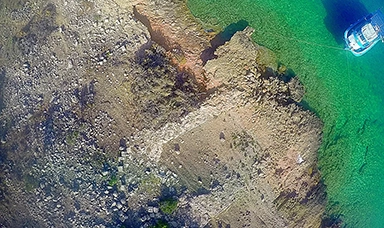 Dana Island, oldest ancient shipyard
Dana Island, oldest ancient shipyard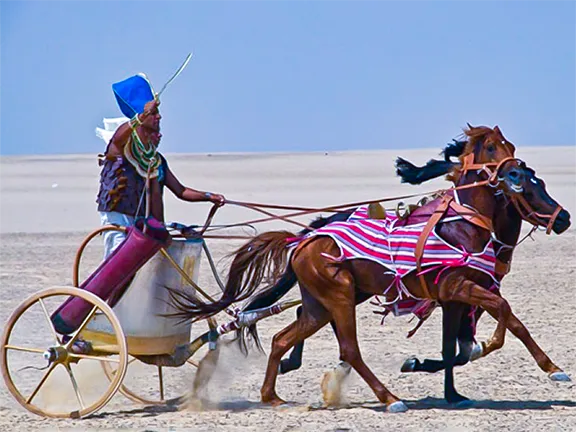 A Bronze Age Courier Service
A Bronze Age Courier Service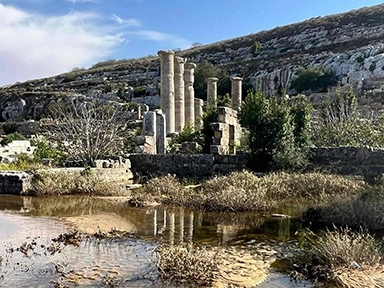 Cyrene's Lost Treasures
Cyrene's Lost Treasures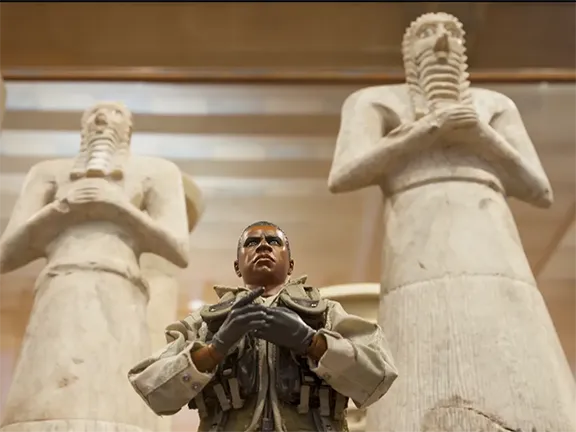 The Invisible Enemy
The Invisible Enemy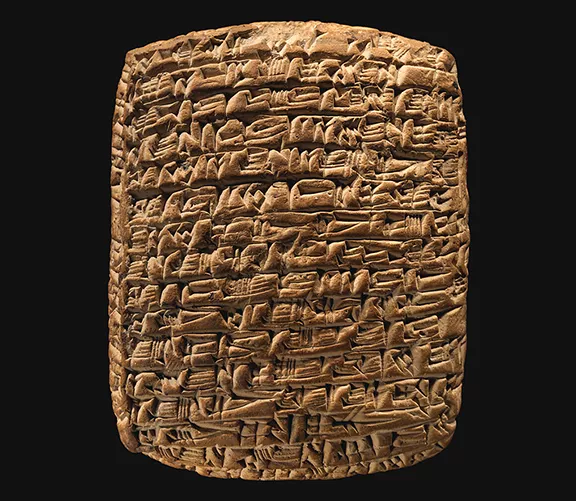 The World's First Company
The World's First Company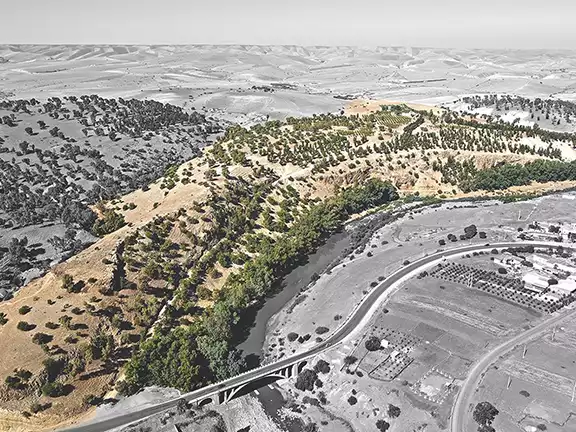 The Copper Age Site of Oued Beht
The Copper Age Site of Oued Beht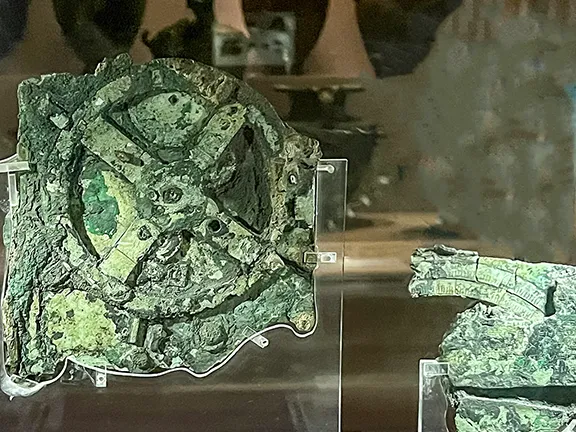 How the Antikythera Mechanism Works
How the Antikythera Mechanism Works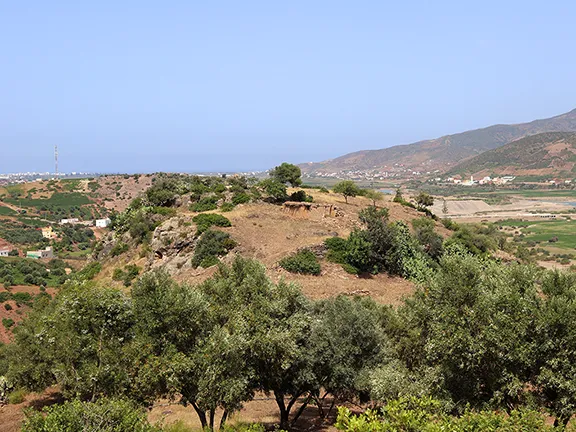 Kach Kouch and Iberia
Kach Kouch and Iberia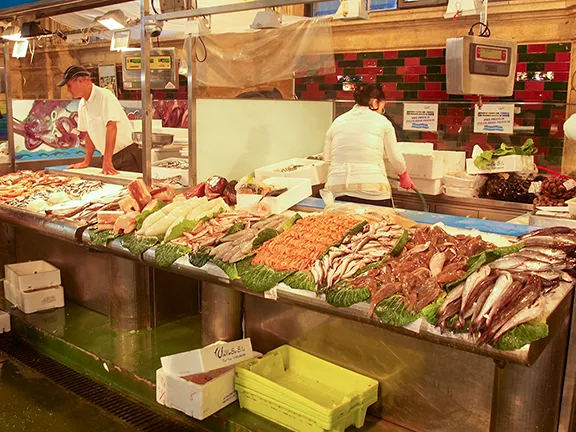 Mediterranean Diet Evolution
Mediterranean Diet Evolution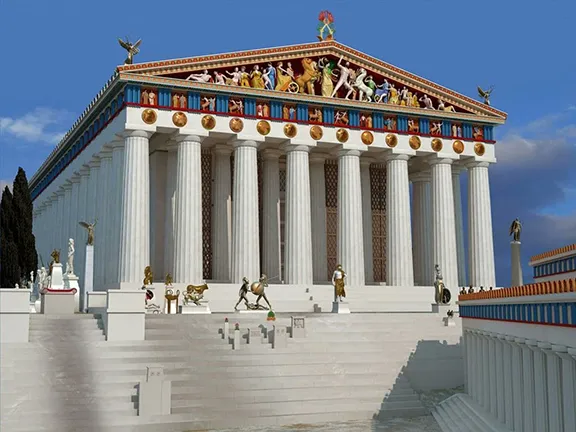 Hidden Colours of Ancient Statues
Hidden Colours of Ancient Statues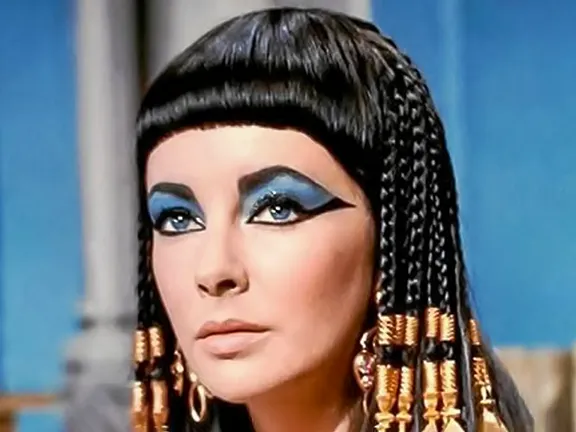 Cleopatra: Egypt's Last Pharaoh
Cleopatra: Egypt's Last Pharaoh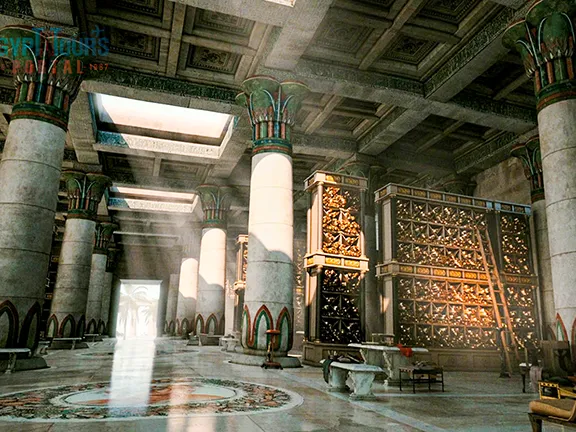 Alexandria Library's True Fate
Alexandria Library's True Fate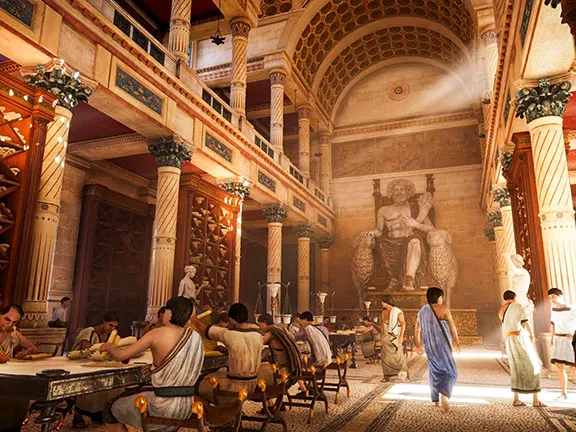 Six Great Ancient Libraries
Six Great Ancient Libraries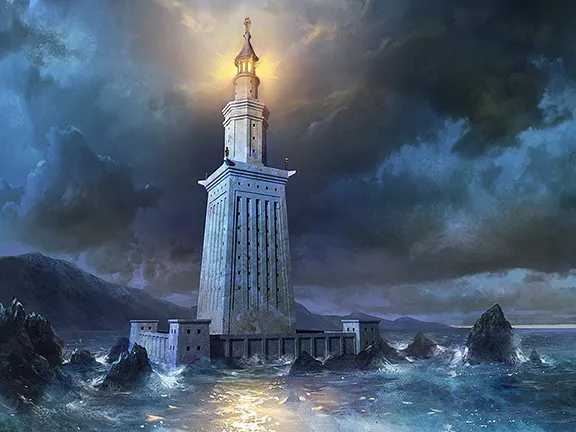 Ancient Greek Technology
Ancient Greek Technology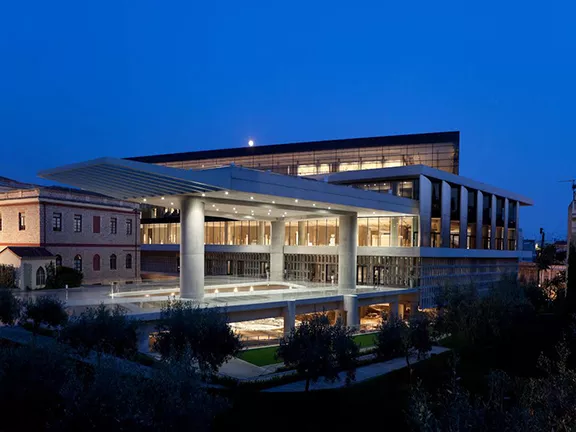 Broadening Horizons
Broadening Horizons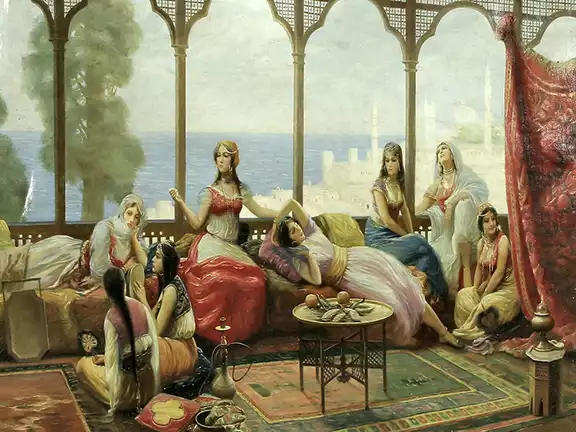 The Nadītu Investors of Sippar
The Nadītu Investors of Sippar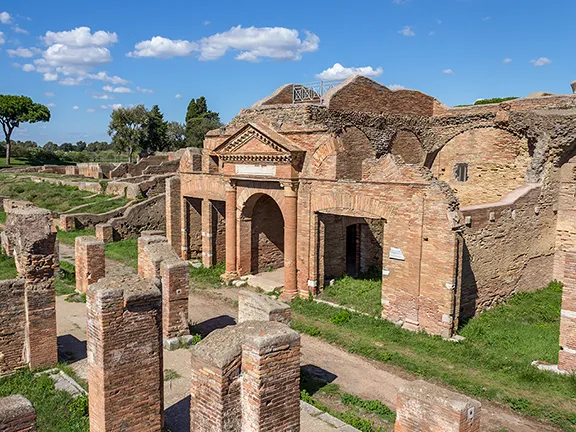 New light on Hadrian
New light on Hadrian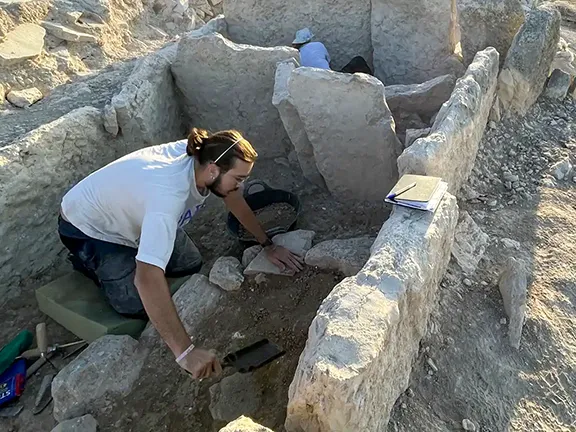 The Dolmens of La Lentejuela Teba
The Dolmens of La Lentejuela Teba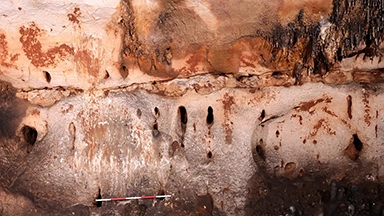 New Cave Art Discovery in Valencia region
New Cave Art Discovery in Valencia region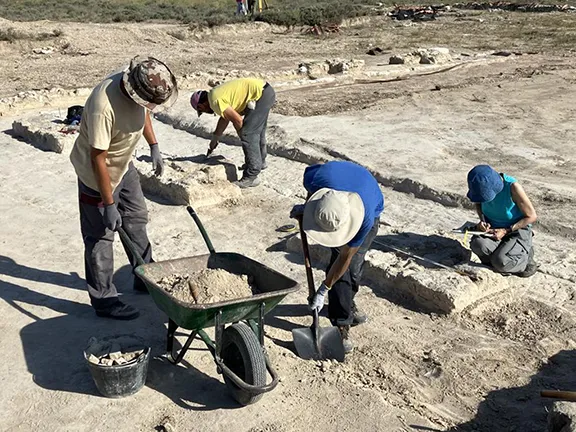 La Cabaneta Oldest Roman Forum in Iberian Peninsula
La Cabaneta Oldest Roman Forum in Iberian Peninsula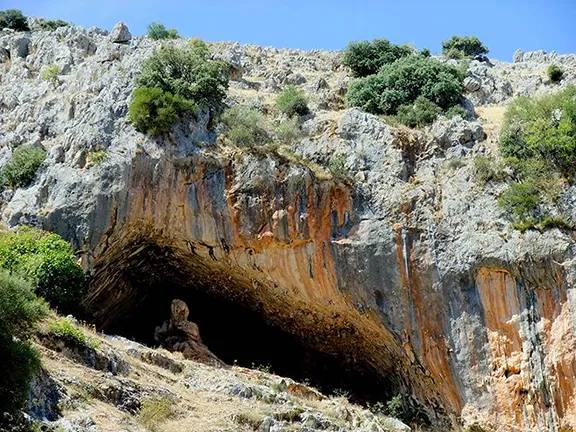 Europe's Oldest Shoes Found: 6,000-Year-Old Sandals Woven from Grass
Europe's Oldest Shoes Found: 6,000-Year-Old Sandals Woven from Grass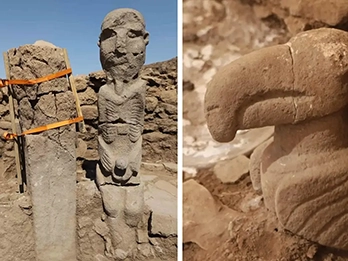 Discoveries at Gobekli Tepe and Karahan
Discoveries at Gobekli Tepe and Karahan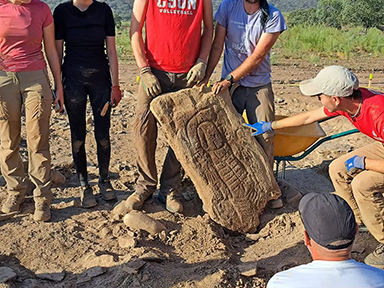 Decorated Stelae found in Canaveral de Leon, Spain
Decorated Stelae found in Canaveral de Leon, Spain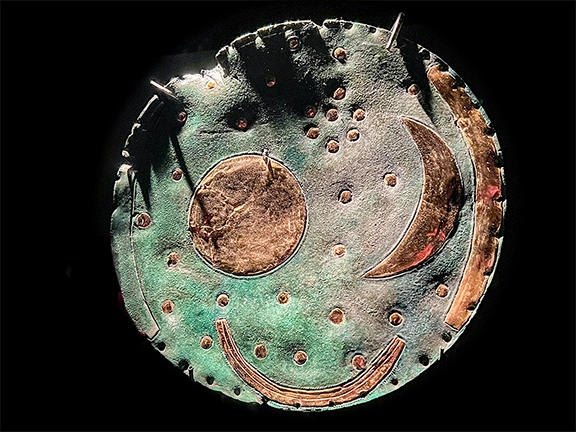 The Nebra Sky Disc: A Bronze Age Calendar
The Nebra Sky Disc: A Bronze Age Calendar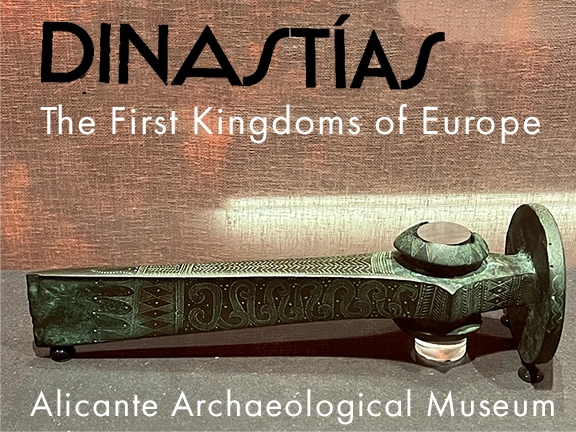 New Exhibition at the Archaeological Museum in Alicante
New Exhibition at the Archaeological Museum in Alicante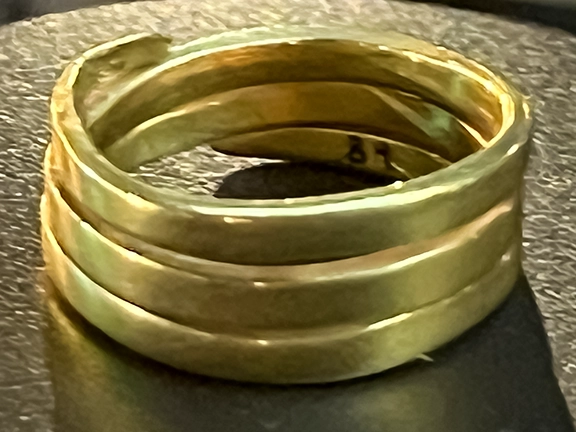 Bronze Age: A Golden Age for Jewellery
Bronze Age: A Golden Age for Jewellery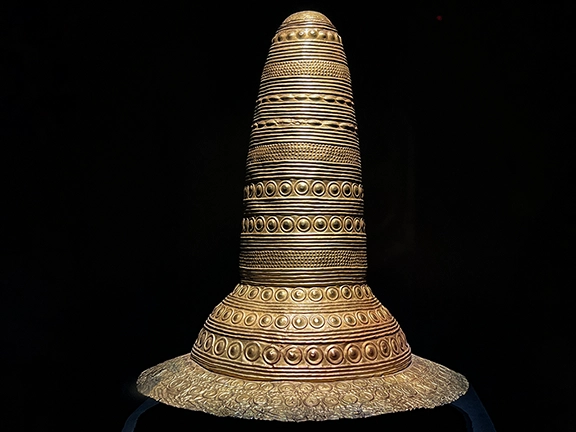 The Golden Hat of Schifferstadt
The Golden Hat of Schifferstadt